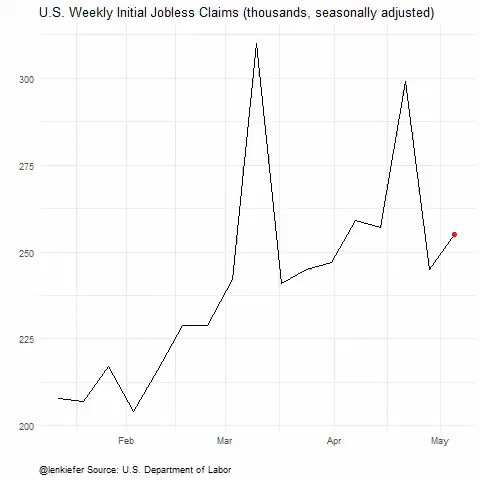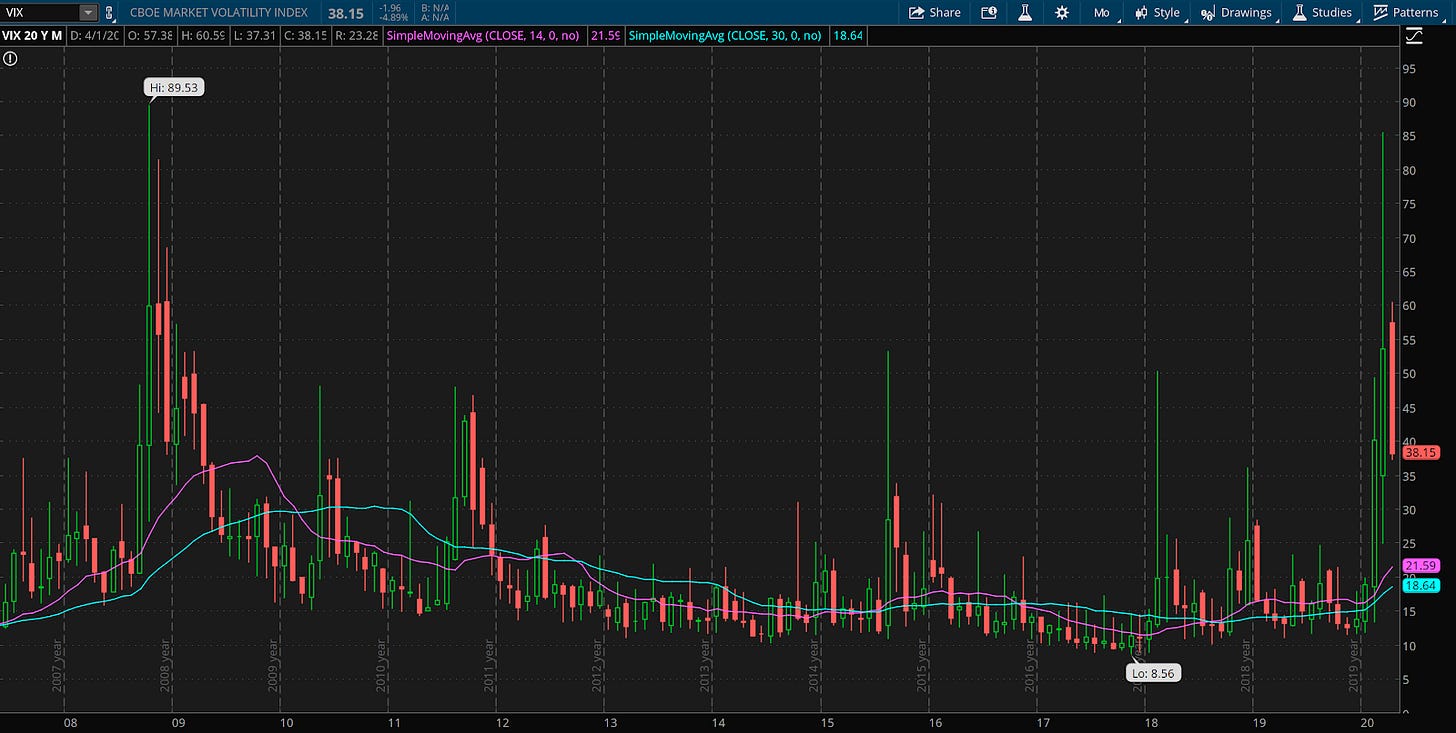Thoughts on Hedging (Part 1)
What is Hedging?
Hedging is the cost of insurance against a potential stock market drop. By definition, hedging is a waste of money... most of the time. Just think about how many months of car insurance premiums you’ve paid vs used. Sometimes however, insurance comes in handy.
Why Hedge Now?
A hedge provides security.
We’re clearly in a recession. Job losses in just the past month seem to be greater than all previously added jobs since the bottom of the “Great Recession”. Unbelievable.
This is one of the scariest graphs I’ve seen:
Yet, in the past month, the market has had an incredible rally. At one point we are down ~35% from the 2020 peak and now (April 18, 2020), we’re down only 15%. The rally started after the gov’t bazooka’d the economy with a major stimulus package worth trillions. Considering the stimulus, and the promise of more as needed, it feels like once the recession is over, the stock market will be poised to do very well. That said, it’s unclear what will happen in between.
The vaccine won’t be available for 17-18 months.
We don’t know whether the virus will have a resurgence.
If it does, what will happen to public safety?
If it does, will the economy be shut down again?
How will industries change unexpectedly after the economy is opened again?
Although the market has been quite strong over the past month, we still have real questions and lots of uncertainty. While I am hopeful that they can figure out how to reopen the economy, no one knows what happens next. The market is almost at the prices that existed before they shutdown the global economy, but the economy is clearly broken.
As a result, I want to explore the topic of portfolio hedging.
How Can We Hedge?
Hedging dampens the volatility in your portfolio. That is, if the market falls, the hedge should help so that your portfolio falls less. There are three ways in which we can accomplish this.
Raise Cash
One way to do that is simply to sell some of your portfolio to reduce exposure to the market and raise cash. If the market falls, cash will dampen volatility in your portfolio. Cash also gives you the optionality to buy back into the market at lower prices, although this can be psychologically difficult to do. The downside of course is that if the market goes up, cash will dampen the gains of your portfolio as well. That’s the Trade-off.
Short The Market
Shorting simply means that you open a position by borrowing shares of a stock or other asset (eg ETF) that you believe may decrease in value. You then sell these borrowed shares to buyers willing to pay the current market price. Once the price goes down, you can purchase the shares at a lower price and return them to whom you borrowed from.
The downside however is that if the shares go up, the risk of loss is theoretically unlimited. Because of this unlimited risk profile, I have usually shied away from shorting.
Buy PUT Options
If you’re new to options, you can learn more here:
You can buy Puts on each individual stock you own. If you have several in your portfolio, that could become costly, complicated and cumbersome.
On the other hand, you could buy PUTs for one or more ETFs that closely resemble the makeup of your portfolio. For example, if you own a lot of high-tech companies (a lot of Mavericks fall into this category), you could consider buying PUTs for the QQQ or IWO ETFs. If you own a lot of large well-known American businesses, perhaps SPY may be a better alternative.
Of course the trade-off with the ETF approach is that you may not fully-hedge your portfolio. For example, if you hedge with SPY, and if the SPY falls say 10%, your portfolio of individual stocks might fall more or less than 10%. However, the fall would likely be well-correlated if you have chosen the appropriate ETF, thereby achieving your hedging objective. This approach is likely easier and cheaper to implement.
Caveat: PUTs Are Expensive Now
Although buying PUTs may be a good hedging strategy, since there is a lot of uncertainty in the world today (and since everyone realizes it), PUTs have become very expensive.
The VIX (often called the Fear Index) is an Index that represents the 30-day forward-looking estimate of market volatility. It is determined based on various option prices on the SPX. If it’s high, it is telling us that option prices are expensive. Last month, it spiked up to pretty much the financial crisis high. Although it has come down a little, at ~$38 it is still about 2.5X what its value was in late February.
This means that the cost of a portfolio hedge using put options on the SPX went up roughly 2.5X since then!
That sucks, but unfortunately, the cost of insurance goes up in a higher risk environment.
Check Out Part 2: The Cost of Hedging With Puts



